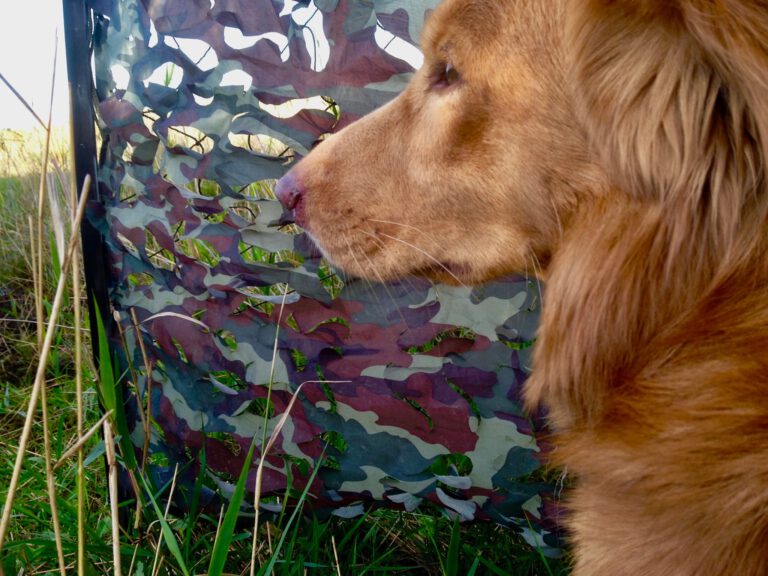
The magic of tolling
We don’t where it was discovered, we don’t know when it was discovered, neither do we know who discovered it.
That red, or red and white, dogs can be used to lure ducks closer to the shore.
We don’t know why the ducks swimming closer. The ducks may think it’s a fox, a predator, but then the wise thing would be to stay on a safe distance …
But, in countries around the North Sea, hunters and gatherers for hundreds of years worked with red dogs to catch and trap ducks. The red dogs were used in England, in France, in Holland, in Germany and in Denmark. Special breeds were born, used, and sadly forgotten when shot guns were introduced and replaced the older hunting methods.
Forgotten in Europe, but not on the other side of the Atlantic Ocean. Settlers from Europe brought the knowledge of the red dogs to North America, to Canada, and discovered Indian tribes hunting with red dogs. Along the shores in Acadia, in Nova Scotia, the hunting tradition with red and white dogs lived on, and a new breed that could both lure the ducks closer to the shore and the hunter, and after the shot could retrieve the fallen birds. This special hunt became known as tolling.
Duck hunting without guns
It can be hard to imagine, but there was duck hunting on a big scale, even before the introduction of shotguns.
These hunters took advantage of the discovery of the ducks´ curiousness to red dogs, and the red dog´s ability to work together with the hunter to catch the ducks.
Special constructions were built, along a pool of water, a pond, a river or a transport canal, with smaller ditches of water leading out and away from the bigger water, each of these ditches (or dykes) slighly curved. Over these dykes hoops or arches were built. The hoops placed over and along the ditch formed a tunnel. Nets were hung over the hoops and the ditch became a net-covered tunnel. The far end of the dyke was also covered with nets to make it a dead end. On one side of these long net tunnels, screens were set up on the outside of the net, and between these screens there were openings.
When ducks had landed on the pool or came swimming on the river, they could be lured into these built dykes and tunnels, and when they were far enough into the tunnel, nets were pulled over the opening and the ducks were enclosed, trapped.
The best way to get the ducks into these dykes were the red dogs.
The decoys
The Netherlands
The oldest traces of this hunt can be found in the Netherlands, dating from as early as the 13th century. The constructions became known as “eendenkooien” (duck cages). The screens on the sides of the dykes were built of reed, and the hunters trained their red dogs to work between the screens and the openings further and further into the dyke to lure the ducks into the cages.
There were hundreds of eendenkooien all over Flanders and Holland, and still today there is close to a hundred of them in operation (even if they today are mostly used for historical or for scientific reasons or for ringing).
The small red and white dogs, that were used to lure ducks, were called Kooikerhondje (Duck catcher´s little dog). They became very popular in the 17th century, and can be seen in paintings by Rembrandt (picture 2), Jan Steen, Vermeer and other Dutch Golden Age painters.
In the 20th century, there were less and less kooien used by hunters or kooikers, and the special dogs were not needed any more. The breed was almost extinct before World War II. A rescue program was started in 1940 by M.C.S. Baroness van Hardenbroek van Ammerstool, and thirty years later, in 1971, the breed Kooikerhondje was finally recognized by the Dutch Kennel Club.
The little red and white dogs, the “kooikers”, not used in hunting nowadays, are seen as one predecessor to our tollers.
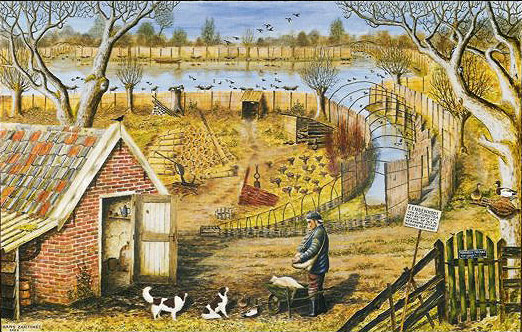
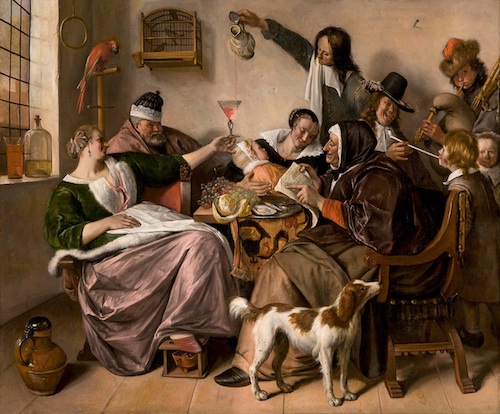
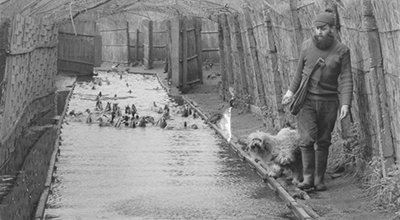
The British isles
The idea to build Eendenkooien spread, and there is research showing that there could have been as many as 1.500 of these constructions in countries from France, Belgium, Germany, Denmark and on the British Isles.
In England, the first was built by a Dutchman, Hydrach Hilens, in the 17th century in St James´s Park for the king Charles the Second. More were built, with inspiration from the Dutch landscape. They even got their name from the eendenkooi – they were called “decoy”.
Duck decoys were constructed along the rivers and along the transport boat canals, and they were also decoys, built with a constructed pond in the centre and three to eight netted curved ditches or dykes out from the centre. In the middle of the 19th Century there was still close to 150 duck decoys used by English hunters.
The old books show that in a single duck decoy up to 10.000 ducks could be caught in a good year.
The red dogs used at the duck decoys became known as Ginger Coy Dogs or English Red Decoy Dogs. A description of these dogs reads: “A dog trained and used in working a decoy in this manner needs to be extremely obedient, able to respond to silent commands and carry out its duties without taking notice of the encroaching wildfowl. The dogs were traditionally given the name of Piper. Such dogs tended to be fox-like in form, small with a bushy tail and a reddish colouration”.
Most decoys were built in East Anglia and Essex. A few decoys were also built in Wales and in Scotland, and there were also decoys built on Ireland by Dutch immigrants.
The introduction of shotguns for hunting led to the same decline as on the continent. Even though the meat from the ducks caught in decoys was higher prized, because it was free from any pellets, this couldn´t stop the decline. Less and less decoys were used and no new ones were constructed. At the end of the 19th century, “ginger coy dogs” were less and less frequent, often used by farm labourers or gypsies, and in the book ‘The Dog in Sport’ from 1938, they are linked with the Fen Tigers, the rough countrymen who worked digging peat and cutting sedge in the Fens, and who were skilled wild-fowlers.
The breed vanished away. The last duck decoy in operation closed down in 1968. Today, there are no Ginger Coy dogs or English Red Decoy Dogs among us – but they are also seen as a predecessor to our Tollers
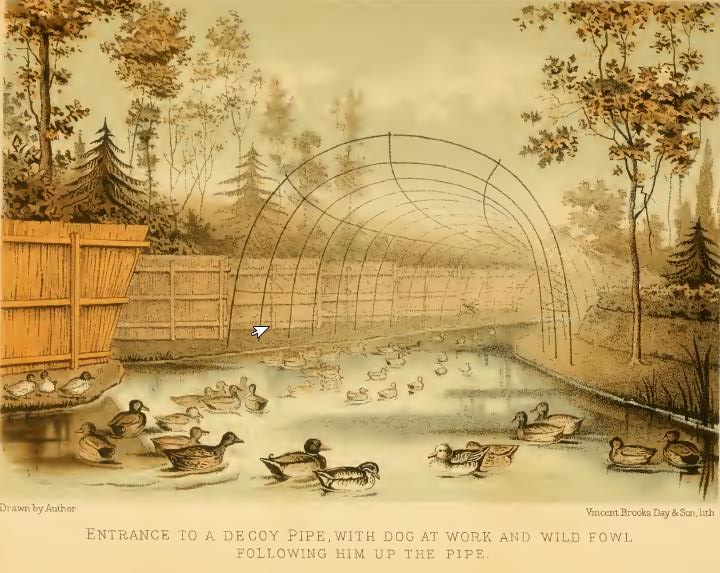
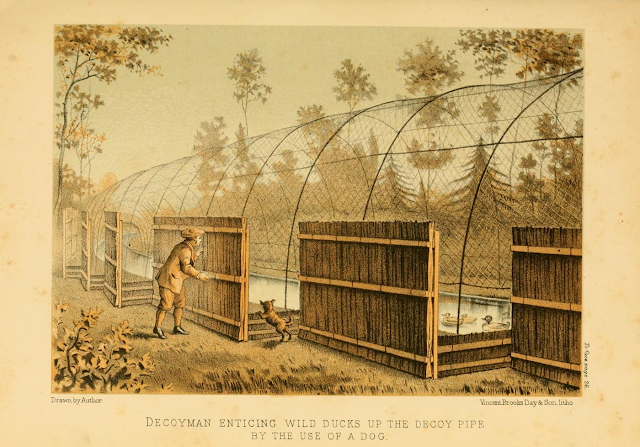
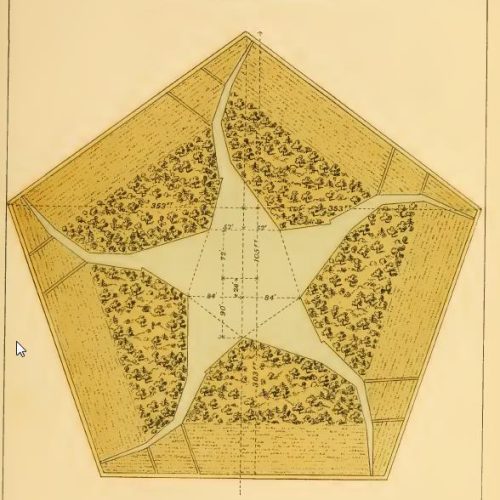
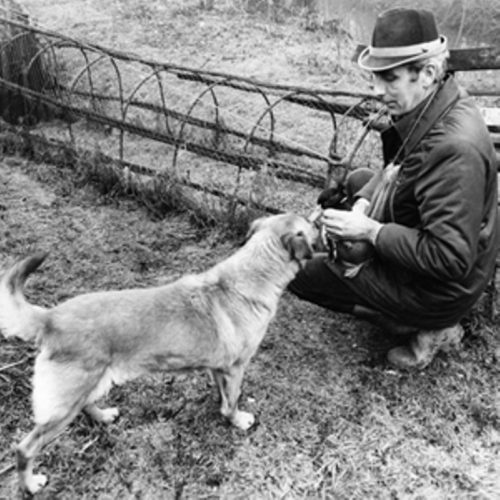

Germany & Denmark
The idea to build decoy spread north as well, along the North Sea coast to Germany and to Denmark.
On the North Frisian Islands (Föhr, Amrum, Pellworm) the first Vogelkojen were first built by sea captains and marine officers as a pastime for the Winter months. Some of these decoy constructions were used for up to 200 years to trap wild ducks. In one of the decoys on Föhr, more than 3 million ducks were caught during the centuries, and there was even a factory for canned ducks until the 1930s. There were probably no special dogs used on these islands.
In Elmsland and other areas close to the North Sea, there were men working as Entenfänger (duck catchers) well into the 20th century, and on some of the pictures of these men we see their dogs.
On the Danish island Fanø, near Esbjerg, a couple of decoys or Fuglekøjer were built, the first in 1866. In the three decoys on the island, the common methods to catch ducks was using previously caught ducks, wooden decoys, or smaller nets thrown over the swimming ducks. It is uncertain if there were any red dogs used on Fanø.
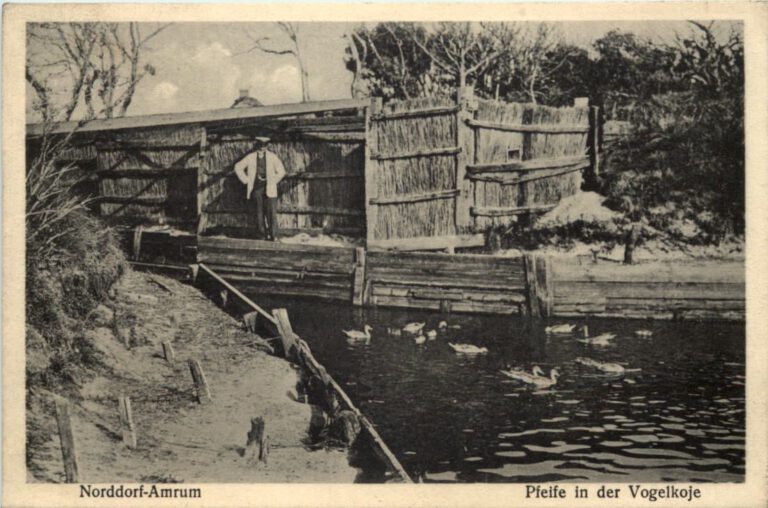
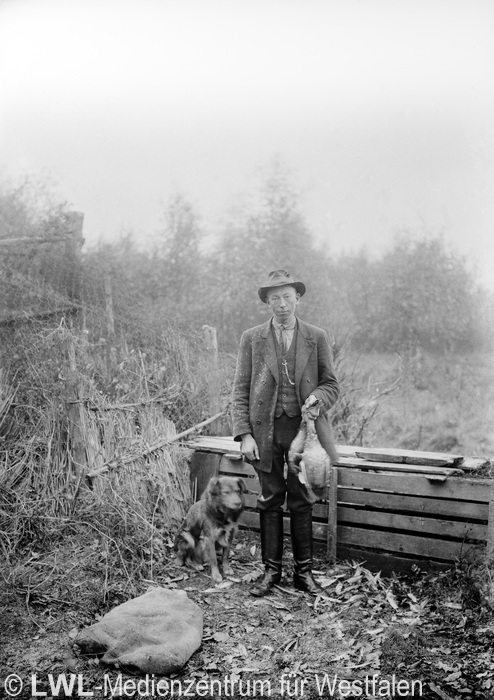
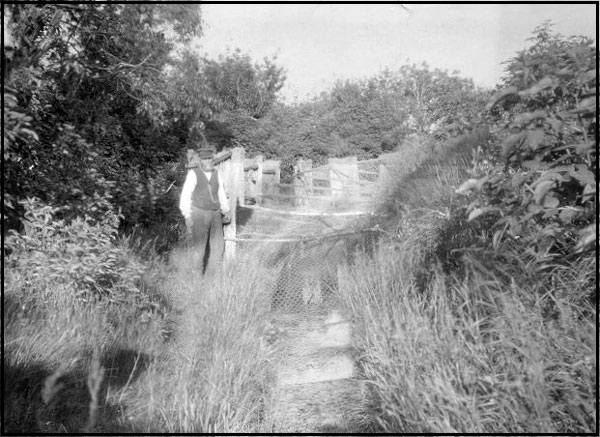
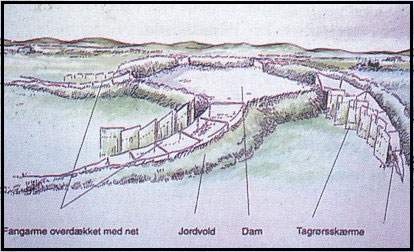
Sweden
There are few records of duck decoys in Sweden, but according to old books there may have been decoys built south of Malmö.
There is also texts in the magazine “Tidskrift för Jägare och Naturforskare”, issued by the Swedish Hunters Association in the 1830s, about the tradition to “hunt with red dogs” brought to Sweden with the Walloon steel workers from the French speaking parts of modern Belgium. The hunting with red dogs were common around Gysinge in Gästrikland.
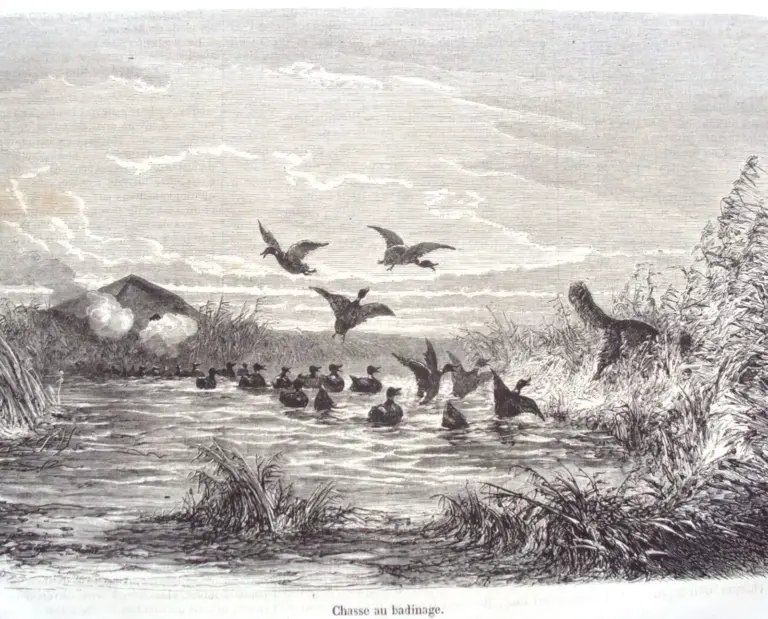
La chasse de badinage
The tradition to build decoys did not reach France, but there was another old hunting tradition using red dogs – le chasse de badinage.
In an article published in 1837, the author, the Count of Reculot, explains the principles of a type of hunting practiced in certain regions of France.
“… before daybreak the hunters will crouch down and remain hidden in their blinds, always downwind. There the greatest silence and the utmost immobility must be maintained. But that is the easiest part. There is one more thing to do, and that’s the most difficult: training the dog to play the role of a wild fox.”
The type of dog was bred to look like a fox and trained to imitate a fox´s behaviour on the shoreline.
“About forty years ago, there was a breed of dog that folks around here called ‘Loulou.’ It had upright ears, a pointed muzzle, a red coat and a fluffy tail, basically all the qualities a hunter desired. Unfortunately, the breed is no longer found in the region of Franche-Comté and Burgundy, but it certainly exists in other parts of France, where perhaps it is still as popular as it used to be in our area.
Now the few hunters who hunt this way are reduced to using dogs of all kinds, as long as they resemble the shape and colour of a fox. And there are even some hunters who rub their dogs with yellow ochre to make it look like a fox; but it doesn’t really have the same effect. So, I always advise hunters to find, at any price, a young dog of the species described above. Get him while he is still very young and train him to fetch slain ducks from the water.”
Another way of hunting in France is described in the book “The Wild-fowler, A Treatise on Ancient and Modern Wild-fowling, Historical and Practical”, from 1864.
“The most attractive method of wild-fowl shooting in France is that in which a little dog is used for the purpose of enticing the birds within range of the sportsman’s gun; for this art the dog performs a similar part to that of an English decoy-piper, being taught to obey its master’s signs in silence, and to skip round reed-screens, erected for the purpose on the banks of lakes or other resorts of wild fowl.
The French sportsman, however, does not entice the birds up a decoy-pipe, and capture them alive; but, having allured them within range of his gun, he thrusts the latter through a loop-hole in the screen, and fires into the midst of the paddling, just as they turn tail to swim away.”
The descriptions from France sounds familiar.
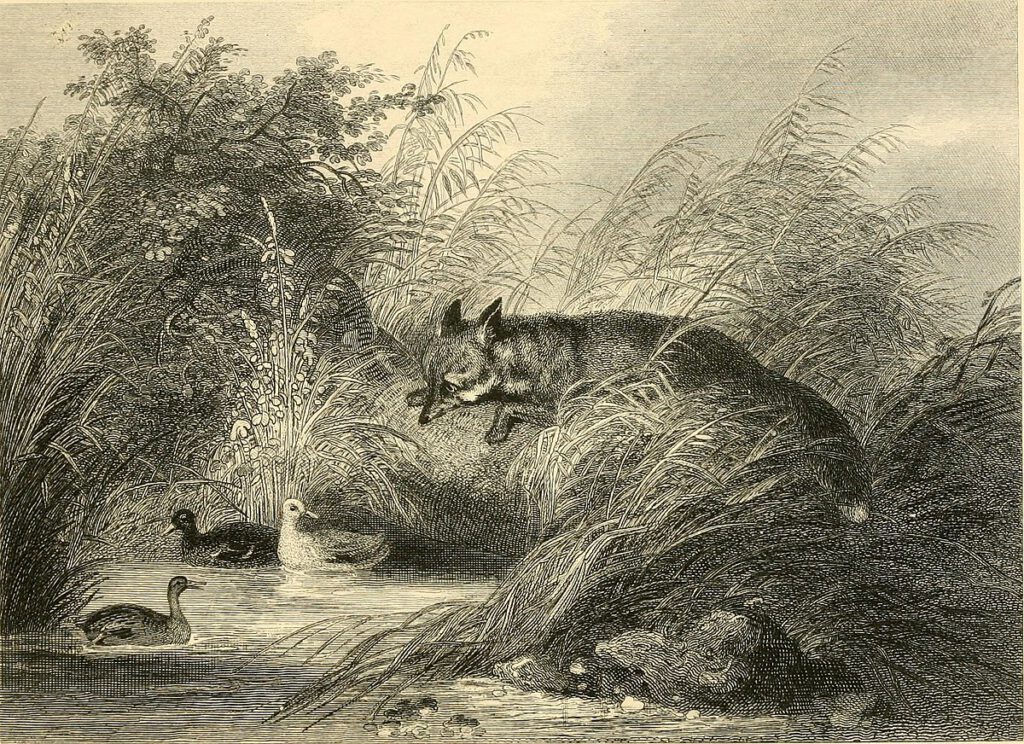
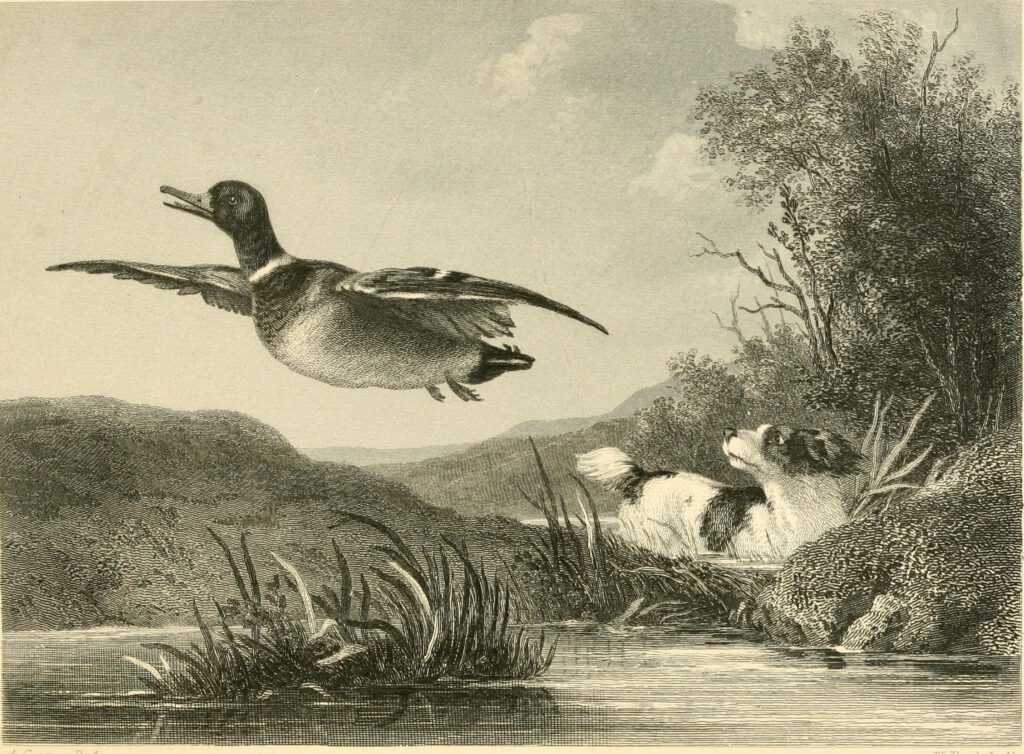
– – – –
The tradition to hunt and catch wild ducks in constructed decoys was forgotten. The red dogs and the breeds that were used for hundreds of years in these decoys in Europe are gone. The French no longer hunted “de badinage” with Loulous …
… but on the other side of the Atlantic Ocean, another way of duck hunting with red dogs lived on. It became known as tolling.
Next chapter: The history of the toller